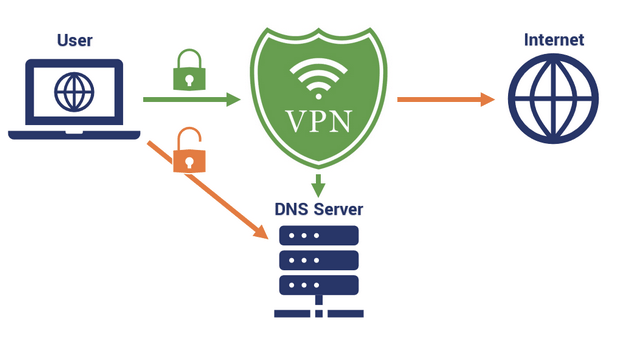So, yes, you just installed a VPN service on your device to boost online anonymity? What next? Do you think merely installing a VPN is enough to be secure and protect your digital privacy? What if the VPN service you installed is not working? How can you be assured that the VPN you’re using is not sabotaging your sensitive information or being snooped on by intruders?
Yes, there’s a rare possibility that the VPN service you’re using is not reliable and might be vulnerable to traffic leaks. Not all VPNs are 100% secure (harsh truth).
Don’t worry! In this post, we will be learning all about how to test for VPN leaks to make sure that your digital privacy and sensitive data is not compromised under any circumstance.
Let’s explore.
Also Read: You Need A VPN And Here’s Why?
Common Causes of Why Your VPN is not Working

Here are some of the most common reasons that may have caused your VPN to malfunction or leak data.
Internet Connectivity Issues: If your VPN connection is frequently dropping while you’re browsing the web, your VPN may not perform effectively.
Also read: VPN Slows Down Internet Speed, What To Do?
VPN Usage Illegal: A lot of countries have strictly banned the usage of VPN under censorship. So, if you’re unable to connect to a remote server located in that region, you won’t avail of the VPN services.
VPN Connection Drops: We’re sure you must’ve heard of the Kill Switch feature. This is a utility feature that protects your sensitive information from being exposed when the VPN connection drops. As soon as the connection drops, Kill Switch gets activated so that your network traffic information is not leaked on the Internet. But yes, most VPN services do not include this security feature. Just make sure that you double-check all its features before paying up for the VPN subscription.
Malicious Attacks: VPN not working? There may be a possibility that your device has been hacked where an intruder has gained unauthorized access over your VPN connection.
How to Test for VPN Leaks?

There are several kinds of VPN leaks that you may encounter. The testing procedure for each VPN leak is different and follows a unique procedure. Let’s discuss various types of VPN leaks and how to overcome them to keep your digital privacy intact.
IP/DNS Leaks

IP leaks majorly occur when two Internet protocols, specifically IPv4 and IPv6, are not compatible. On the other hand, one may encounter DNS leaks whenever a certain DNS server accidentally reveals your current location.
Also Read: What Is A DNS Leak And How To Prevent It?
To test for IP/DNS leaks on your VPN connection, follow these quick steps:
- Switch off the VPN service. First, you need to find out your IP address information. You can use the Command Prompt shell, type “ipconfig” to get all the necessary details. An alternative way to find out the accurate IP address information, visit this link. Take note of the IP address.
- Enable the VPN service and visit https://www.dnsleaktest.com/.
- As soon as your launch this webpage, you will view an IP address displayed on the screen.
- Match this IP address info with the original IP that you initially noted down.
- If the VPN service is working properly, both these IP addresses will not match. If you’re able to view the accurate IP address details on the “DNS Leak Test” website, it indicates the probability of IP/DNS leaks.
WebRTC Leaks
Another common VPN leaks are WebRTC that stands for Web Real-time Communication. WebRTC is a technology that comes embedded along with most browsers, including Google Chrome, Mozilla Firefox, Opera, and more. WebRTC enables websites to capture and stream real-time data from users like audio, voice chat, etc.
But unfortunately, most malicious websites take advantage of this technology and try to locate your IP address information by inserting a few lines of code under the name of “WebRTC” technology.

To test for WebRTC VPN leaks, follow these steps:
First, find out your actual IP address information after turning off the VPN service. Take note of the IP address.
Enable the VPN service and connect to a remote server. Visit this link to test for WebRTC leaks.
If the IP address displayed under this website matches your original IP address information, it simply indicates that your VPN is not secure enough.
Download Systweak VPN for Windows

Looking for an excellent VPN recommendation that keeps you 100% secure while browsing the web? Download Systweak VPN for Windows to enjoy lightning-fast connection speeds via a secure encrypted tunnel. Systweak VPN establishes a secure connection between your device and the remote server, based on advanced 256-bit military-grade encryption technology. Here are a few key features of the Systweak VPN tool that makes it one of the best VPN services to give a shot.
- 100% online anonymity and data privacy.
- Access restricted content without being traced.
- IP address masking.
- Bypass censorship.
- Avoid IPS throttling.
- Kill Switch included.
- Public WiFi security.
- 30-day money-back guarantee.
Conclusion
This wraps up our summarized guide on how to test for VPN leaks to make sure that your sensitive data and information are not being exposed on the web. You can take up these IP/DNS, WebRTC data leak tests to overcome your paranoia so that you can anonymously surf the Internet with peace of mind.



 Subscribe Now & Never Miss The Latest Tech Updates!
Subscribe Now & Never Miss The Latest Tech Updates!
Mansi Vijay
I am new to using a VPN service. This was a helpful guide to learn about the leaking concept. Kudos to the writer!